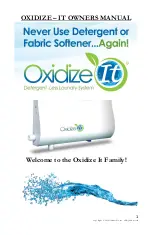
49
3. VACUUM PACKING DIFFERENT TYPES OF FOOD
Vacuum packing is not a substitute for freezing or
canning. Vacuum-packed foods still need to be
stored in the refrigerator or freezer or in a cool place
(e.g. dried meat products in a cellar).
Soups, sauces and liquids
should either be pre-frozen
before packing in a vacuum bag or vacuum packed in a
vacuum container.
Boiled meat, raw meat and fish:
For the best results,
we recommend you to pre-freeze meat and fish for 1-2
hours prior to vacuum packing to ensure the retention
of juices and shape, and to help guarantee a good seal.
If pre-freezing is not possible, place a folded paper
towel between the meat and the top of the bag, avoi
-
ding the area to be sealed. Leave the paper towel in the
bag when vacuum packing to absorb excess moisture
and juices.
Note: Beef may appear darker after vacuum packing
due to the removal of oxygen. However, this does not
affect its quality.
Vegetables:
Vegetables should be blanched before
freezing. The process of blanching stops the enzyme
action and preserves flavour, colour and texture. 1 to 2
minutes in boiling water is enough for fresh leafy vege
-
tables or beans. For chopped zucchini or broccoli and
other cruciferous vegetables allow 3 to 4 minutes, for
carrots allow 5 minutes. After blanching, submerge the
vegetables in cold water to stop the process then dry
them with a paper towel prior to vacuum packing.
We recommend you to store leafy vegetables in vacuum
containers with drip trays. This way, spinach and lettuce
will stay fresh up to 2 weeks in the refrigerator.
Herbs:
Herbs containing a high level of essential oils,
such as sage, thyme, rosemary or peppermint are
not suitable for vacuum packing only for drying. Basil,
tarragon, garden dill, parsley, and chive should be
frozen. If dried, they lose too much flavour.
Mushrooms, raw garlic and raw potatoes:
We strongly
recommend the manual - pulse vacuum packing func
-
tion. Refer to books about mushrooms for information
about correct preparation (if blanching is needed or
not). Clean them using a brush, chop them and then
store them in single use portions. We recommend that
you put them in the freezer for an hour before vacuum
packing. Do not thaw the mushrooms before cooking
them. Boil frozen mushrooms in hot salty water or add
them directly to sauces or soups.
Coffee:
If you want to properly vacuum pack coffee
or other ground food, leave the items in their original
packaging and place them into the Status vacuum bag.
If you do not have the original packaging, use a regular
bag and insert it in the vacuum bag. This way you can
prevent grains from being sucked into the machine.
Thawing vacuum packed foods:
Foods should
always be thawed in the refrigerator to preserve quality.
4. BENEFITS OF VACUUM PACKING
4.1. WHAT IS VACUUM?
Signs of freezer burn are rancid meat, rotten vege-
tables and tasteless fruit. Freezer burn appears when
the packaging is permeable to air (common one-ply
PE bags) and frozen food is exposed to oxygen.
4.2. WHAT IS FREEZER BURN?
Oxygen provokes chemical changes on the food and as
a consequence grease can go rancid, colour of the food
changes, mould and bacteria multiply, flavour, vitamins,
aroma and minerals are lost. Vacuum packing drama
-
tically slows down such undesired effects, prolongs the
shelf life of food and preserves its quality.
Содержание SOLID 300
Страница 4: ......
Страница 38: ......
Страница 39: ...innovations STATUS SOLID 300 SEMI PROFESSIONAL VACUUM PACKING MACHINE USER MANUAL EN ...
Страница 56: ......








































